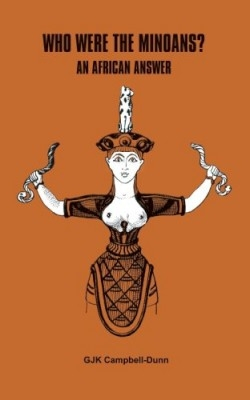Who Were the Minoans?
An African Answer
The origin of Minoan society is an enduring mystery. The key lies on the island of Crete in a language of early hieroglyphics, known as Linear A. Its successor language, Linear B (Mycenaean) was deciphered in 1953 by John Chadwick and Michael Ventris. Linear A (Minoan) fails to match up with Indo-European or Mediterranean language groups, frustrating attempts to trace the Minoans. Comparative linguist Graham Campbell-Dunn, who studied under Chadwick, comprehends at least fifty symbols of Linear A. He finds grammatical and topical parallels to Proto Niger-Congo, a breakthrough facilitated by his mentor’s advice: “…meaning takes priority over form…”
Minoan art is dominated by images of cattle, as were the lives of the Fulani, and various animals common to west-central Africa. The architecture of Crete and Thera includes rain courts like those of the Yoruba. Modern day Fula bears a striking similarity to Linear A. Mass migration from the once lush lands between Lake Chad and Senegal was precipitated by the desertification of the Sahara, which occurred around the time of the earliest Minoan presence on Crete.
In-line citations back individual statements throughout this book; the bibliography runs forty pages. If there are cracks in the case, they relate to Campbell-Dunn’s flexible acceptance of mobile syllable ordering. He accounts for a proportion of previously undeciphered terms by attributing them to a secret language, roughly speaking, a sort of pig Latin which Fulani men used to obfuscate matters they didn’t want women to comprehend.
After the stage-setting first couple of chapters, Who Were the Minoans? is a series of pronunciation comparisons, technical terms and symbologies. An abbreviations key relegated to the back pages is not mentioned in the table of contents. There is no problem with an ancient languages expert writing for peers, but an opportunity exists to present some of this groundbreaking information to a broader audience in another book using lay terms and/or clarifying the jargon.
Campbell-Dunn was educated at the University of New Zealand and Cambridge University. He was on the faculty of the University of Victoria of Wellington. A previous publication on this topic is Minoan Linear Scripts: 44 Signs Deciphered.
Who Were the Minoans? takes stumbling blocks of previous origin theories and uses them to pave a road to an unexpected place. While the author has made a case which appears to be highly statistically significant, other interested linguists may still take a swipe at his assumptions. Too arid for the general public, but worth reading for specialists.
Reviewed by
Todd Mercer
Disclosure: This article is not an endorsement, but a review. The publisher of this book provided free copies of the book and paid a small fee to have their book reviewed by a professional reviewer. Foreword Reviews and Clarion Reviews make no guarantee that the publisher will receive a positive review. Foreword Magazine, Inc. is disclosing this in accordance with the Federal Trade Commission’s 16 CFR, Part 255.

